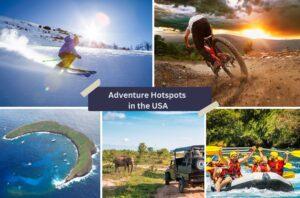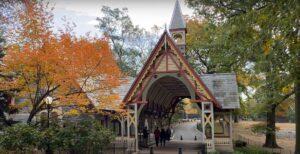Amazon Rainforest, often referred to as the “Lungs of the Earth,” stands as one of the planet’s most iconic and ecologically crucial landscapes. Its sprawling expanse covers approximately 5.5 million square kilometers across South America, encompassing nine countries.
This guide aims to delve into the remarkable intricacies of the Amazon Rainforest, shedding light on its unparalleled biodiversity, global significance, indigenous cultures, imminent threats, conservation efforts, and the collective responsibility we share to ensure its survival.

Biodiversity Beyond Compare
- Variety of Life Forms: With an estimated 390 billion individual trees belonging to over 16,000 species, the Amazon Rainforest boasts a staggering array of life forms. From elusive jaguars prowling the undergrowth to the vibrant plumage of toucans, this ecosystem teems with a kaleidoscope of species.
- Unique Adaptations: Survival in the Amazon requires ingenious adaptations. Epiphytic plants, which grow on other plants without harming them, exemplify nature’s creativity in utilizing limited resources.
- Symbiotic Relationships: The rainforest thrives on intricate relationships where species rely on each other. Ant plants, for instance, offer shelter and sustenance to ants in return for protection against herbivores.
- Genetic Reservoir: The Amazon’s rich genetic diversity harbors untapped potential for medicine, agriculture, and beyond. Species found here might hold the key to curing diseases or enhancing crop resilience.
Environmental and Global Importance
- Climate Regulation: The Amazon plays a pivotal role in shaping weather patterns and regulating local and global climates. Its extensive canopy releases water vapor through transpiration, which cools the air and influences rainfall patterns.
- Oxygen-Carbon Cycle: Responsible for producing about 20% of the world’s oxygen, the Amazon Rainforest acts as a vital player in the Earth’s oxygen-carbon cycle. Its trees absorb carbon dioxide, helping to mitigate climate change.
- Impact on Biodiversity: The Amazon’s diversity affects ecosystems worldwide. As a “biodiversity hotspot,” its conservation is crucial to preserving the intricate tapestry of life across the planet.
Indigenous Cultures and Traditional Knowledge
- Diverse Indigenous Communities: Home to approximately 400 distinct indigenous groups, the Amazon Rainforest encapsulates a wealth of human cultures, languages, and traditions, each contributing to its unique identity.
- Sustainable Practices: Indigenous communities often possess profound knowledge of sustainable resource management. Their practices, like agroforestry that combines cultivation with preserving tree cover, showcase harmonious interactions with nature.
- Connection to the Land: Indigenous people’s spiritual and cultural ties to the land are integral to their identities. These communities face challenges as their territories are encroached upon, undermining their ways of life.
Pressing Threats and Challenges in Amazon Rainforest
- Deforestation and Habitat Loss: Deforestation remains a critical issue, driven by activities like logging, agriculture, and cattle ranching. This results in habitat loss, putting countless species at risk of extinction.
- Agricultural Expansion and Logging: Large-scale agriculture, particularly for soy and palm oil, contributes significantly to deforestation. Logging further exacerbates the degradation of these vital ecosystems.
- Illegal Mining and Infrastructure: Illegal mining for resources like gold and the development of roads disrupt the fragile balance of the rainforest, leading to pollution, habitat fragmentation, and increased human impact.
Conservation Efforts and Solutions for Amazon Rainforest
- Deforestation Prevention: Collaborative efforts between governments, NGOs, and local communities focus on designating protected areas, implementing land-use regulations, and employing advanced satellite technology to monitor and combat deforestation.
- Reforestation Programs: Restoration projects aim to recover degraded areas by replanting native species, thus enhancing biodiversity and aiding in climate stabilization.
- Sustainable Practices and Consumer Choices: Support for sustainably produced goods and responsible tourism can drive positive change. By opting for products that do not contribute to deforestation, consumers play a vital role in shaping market dynamics.
Responsible Visitation and Ideal Timing to Amazon Rainforest
- Understanding Impact: When visiting the Amazon Rainforest, it’s crucial to understand the potential impacts of tourism on this delicate ecosystem. Opt for operators committed to sustainable practices.
- Respecting Indigenous Communities: If interacting with local communities, respect their cultural norms, and seek to learn about their ways of life rather than impose your own.
- Minimizing Footprint: Follow guidelines to minimize your ecological footprint, such as staying on designated trails and avoiding excessive noise that may disturb wildlife.
- Ideal Timing: The Amazon Rainforest experiences distinct wet and dry seasons. The dry season (June to November) offers better visibility and easier access to certain areas, while the wet season (December to May) showcases lush landscapes and abundant wildlife.
The Path Forward
- Collective Responsibility: The preservation of the Amazon Rainforest is a global imperative. International collaboration informed decision-making, and raising awareness are essential to safeguarding this invaluable ecosystem.
- Supporting Conservation Organizations: Individuals can contribute to conservation efforts by supporting reputable organizations dedicated to protecting the Amazon. Donations, volunteering, or advocacy can collectively make a difference.
The Amazon Rainforest remains an intricate web of life that holds immeasurable value for the planet’s health and the well-being of both its indigenous inhabitants and the global community. As we navigate the challenges of the modern world, recognizing the irreplaceable significance of this vital ecosystem underscores the urgency to act responsibly and decisively to ensure its survival for generations to come.
Also, Read Cairo in Egypt






